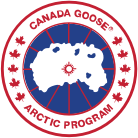Your shopping bag is empty.
Ship To:
- Austria (€EUR)
- Belgium (€EUR)
- Bulgaria (€EUR)
- Croatia (€EUR)
- Cyprus (€EUR)
- Czech Republic (€EUR)
- Denmark (€EUR)
- Estonia (€EUR)
- Finland (€EUR)
- France (€EUR)
- Germany (€EUR)
- Greece (€EUR)
- Greenland (€EUR)
- Hungary (€EUR)
- Iceland (€EUR)
- Ireland (€EUR)
- Italy (€EUR)
- Latvia (€EUR)
- Lithuania (€EUR)
- Luxembourg (€EUR)
- Malta (€EUR)
- Monaco (€EUR)
- Netherlands (€EUR)
- Norway (€EUR)
- Poland (€EUR)
- Portugal (€EUR)
- Romania (€EUR)
- Russia (€EUR)
- Serbia (€EUR)
- Slovakia (€EUR)
- Slovenia (€EUR)
- Spain (€EUR)
- Sweden (SEK)
- Switzerland (CHF)
- Turkey (€EUR)
- Ukraine (€EUR)
- United Kingdom (£GBP)

